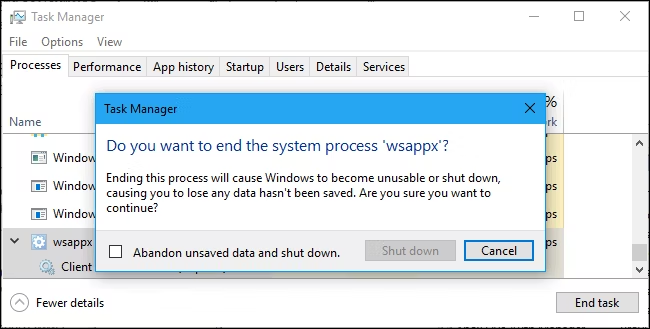What is wsappx and how to fix its high disk and CPU usage

Have you seen an odd process running on your Windows computer called wsappx? Have you probably thought that wsappx might be a virus? Don't worry, wsappx is not a virus, it's a Windows core process that runs in the background on Windows 10 and 8 and helps to install and update applications from Windows Store. It often uses a significant amount of CPU and disk resources. In this article, we will discover what this process is about, and how to lower the CPU and disk resources usage. Read on!
What is wsappx?
The wsappx process is a built-in Windows feature that allows you to install, update and remove apps from Windows Store, as well as to check if these apps are correctly licensed. If you see the wsappx process running in the background when you are not installing or uninstalling the apps, it's probably because it is updating them in the background.
Why does wsappx use a lot of disk resources and CPU?
The wsappx process uses a lot of disk and CPU resources when installing, updating, or uninstalling Windows Store apps and it can slow down your computer. Sometimes, the updating can run in the background without you knowing it. If you want to prevent the wsappx process from using CPU and disk to update apps in the background, you can disable the automatic update of the apps, and perform the updates manually. This way, you won't have your apps up-to-day automatically, but you'll have to check on them and update them by yourself.
To disable the function, go to Windows Store and click your profile icon at the top right, select Settings, and switch off the Update apps automatically option.

When you decide to update your apps, simply go back to Windows Store, click your profile icon, and go to Downloads and Updates. You will see a list of available updates, so you can click on them and your apps will be updated.
Can I disable wsappx?
No, you can't completely disable the wsappx process, and if you try to end the process via Task Manager, Windows will warn you that your system will shut down since it's one of the core processes on Windows.

It runs when necessary (when an app is getting installed, uninstalled, or updated), and after it's finished, wsappx switches off, so it only uses the system resources while working. If you want to have it under your control, then use the method above and change your settings to manual updates.

